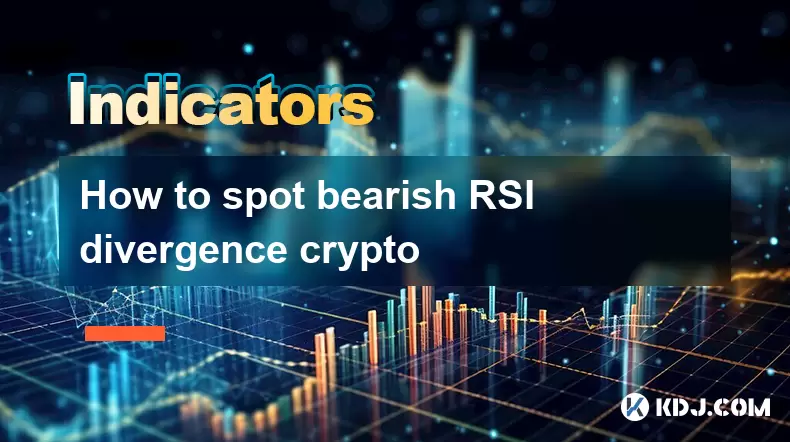-
 Bitcoin
Bitcoin $120400
1.77% -
 Ethereum
Ethereum $3615
7.90% -
 XRP
XRP $3.580
17.84% -
 Tether USDt
Tether USDt $1.001
0.06% -
 BNB
BNB $729.4
1.25% -
 Solana
Solana $179.9
5.04% -
 USDC
USDC $0.0000
0.01% -
 Dogecoin
Dogecoin $0.2311
8.22% -
 TRON
TRON $0.3226
4.04% -
 Cardano
Cardano $0.8490
12.85% -
 Hyperliquid
Hyperliquid $46.45
0.72% -
 Stellar
Stellar $0.4913
8.54% -
 Sui
Sui $4.027
2.00% -
 Chainlink
Chainlink $18.51
11.67% -
 Hedera
Hedera $0.2818
21.51% -
 Avalanche
Avalanche $24.03
7.40% -
 Bitcoin Cash
Bitcoin Cash $508.5
2.90% -
 Shiba Inu
Shiba Inu $0.00001496
3.24% -
 UNUS SED LEO
UNUS SED LEO $8.961
1.83% -
 Toncoin
Toncoin $3.264
3.13% -
 Litecoin
Litecoin $104.6
8.15% -
 Polkadot
Polkadot $4.389
6.11% -
 Uniswap
Uniswap $9.924
10.63% -
 Monero
Monero $337.9
0.49% -
 Pepe
Pepe $0.00001376
2.79% -
 Bitget Token
Bitget Token $4.830
2.46% -
 Ethena USDe
Ethena USDe $1.001
0.05% -
 Dai
Dai $1.000
0.02% -
 Aave
Aave $325.2
1.66% -
 Bittensor
Bittensor $423.7
-0.85%
How to spot bearish RSI divergence crypto
Bearish RSI divergence in crypto signals weakening momentum when price hits new highs but RSI forms lower highs, often hinting at a trend reversal.
Jul 14, 2025 at 06:01 pm

Understanding RSI Divergence in Cryptocurrency
The Relative Strength Index (RSI) is a widely used momentum oscillator in technical analysis, particularly within the cryptocurrency market. It helps traders identify overbought or oversold conditions and potential reversal points. Bearish RSI divergence occurs when the price of a cryptocurrency makes a new high, but the RSI fails to confirm this move by forming a lower high. This divergence often signals weakening momentum and an impending price drop.
Traders should pay attention to the relationship between price action and RSI values, especially on higher timeframes like 4-hour or daily charts, where false signals are less frequent. The key idea behind bearish RSI divergence is that the upward momentum is slowing down even though the price continues to rise. This mismatch can be an early sign of trend exhaustion.
Identifying Key Components of Bearish RSI Divergence
To accurately spot a bearish RSI divergence, you need to focus on two main components:
- Price highs: Look for consecutive peaks in the price chart. A valid bearish divergence requires at least two swing highs.
- RSI highs: Simultaneously, observe the RSI line. If it forms a lower high compared to the previous one while the price hits a higher high, a bearish divergence is likely present.
It’s crucial to draw trendlines connecting the RSI peaks and price peaks to visually confirm the divergence. Misalignment between these trendlines is a strong indicator that the current uptrend may reverse soon. Also, ensure that the RSI is above the 50 level, as this increases the reliability of the signal.
Differentiating Between Regular and Hidden Divergence
Not all divergences are the same. There are two types: regular and hidden. Regular bearish divergence happens during an uptrend and indicates a potential reversal to the downside. This is the type we’re focusing on.
On the other hand, hidden bearish divergence typically appears during a pullback within a downtrend and suggests continuation rather than reversal. Traders must distinguish between the two to avoid confusion. In crypto markets, which are highly volatile, misinterpreting the type of divergence can lead to costly mistakes.
Key characteristics of regular bearish divergence include:
- Price creates a higher high
- RSI creates a lower high
- Occurs after a strong rally
This pattern often precedes sharp corrections, especially if the asset has been overextended to the upside.
Confirming the Signal with Additional Tools
While RSI divergence is a powerful tool, relying solely on it can be risky. To increase accuracy, combine it with other indicators and price action tools such as:
- Candlestick patterns: Bearish candlesticks like shooting stars, hanging men, or engulfing candles appearing near resistance levels can validate the divergence.
- Moving averages: A cross below key moving averages like the 50-day or 200-day SMA could support the bearish signal.
- Volume analysis: Declining volume during rising prices confirms waning buying pressure and supports the bearish divergence.
By using multiple confirming factors, traders reduce the likelihood of acting on false signals. For example, if a cryptocurrency's RSI shows divergence and the MACD histogram starts shrinking, it reinforces the possibility of a reversal.
Practical Steps to Spot Bearish RSI Divergence
Here’s how to practically apply what you’ve learned to spot bearish RSI divergence in real-time crypto trading scenarios:
- Step 1: Open your preferred trading platform and select a cryptocurrency pair such as BTC/USDT or ETH/USDT.
- Step 2: Apply the RSI indicator to the chart—typically set at a 14-period default.
- Step 3: Zoom out to a higher timeframe (e.g., 4H or daily) to filter out noise and identify clear swing highs.
- Step 4: Draw trendlines connecting recent price highs and corresponding RSI highs.
- Step 5: Watch for situations where the price achieves a higher high but the RSI records a lower high.
- Step 6: Wait for additional confirmation signals such as bearish candlesticks or a breakdown below a key support level.
This process allows traders to systematically analyze charts and make informed decisions based on objective criteria rather than emotions or guesswork.
Common Pitfalls to Avoid When Analyzing RSI Divergence
Even experienced traders can fall into traps when interpreting RSI divergence. Here are some common mistakes to avoid:
- Overtrading minor divergences: Not every small divergence leads to a significant price move. Focus only on clear, well-defined divergences.
- Ignoring trend context: Acting on bearish divergence in a strong uptrend without considering broader market sentiment can result in premature exits.
- Misaligning swing points: Ensure that both price and RSI swing points align correctly. Misaligned comparisons lead to incorrect conclusions.
- Failing to wait for confirmation: Jumping into a trade before confirmation increases risk. Always wait for a bearish candle or support break before entering a short position.
Avoiding these pitfalls ensures more consistent results when applying RSI divergence strategies in crypto trading.
Frequently Asked Questions
Q: Can bearish RSI divergence occur in sideways markets?
Yes, although it’s less reliable in ranging markets. In sideways movement, RSI tends to oscillate without clear direction, making divergence harder to interpret. Confirmation from other indicators becomes even more important in such environments.
Q: What is the ideal RSI setting for spotting divergence in crypto?
The standard 14-period setting is most commonly used. However, some traders adjust it to 7 or 21 depending on their strategy and timeframe. Shorter periods increase sensitivity, while longer ones smooth out data.
Q: Is bearish RSI divergence more effective on certain cryptocurrencies?
No specific coin guarantees better results. However, assets with higher liquidity and volume tend to produce more reliable signals due to stronger participation and clearer price action.
Q: How long does a bearish RSI divergence signal remain valid?
There’s no fixed expiration time. Some reversals happen immediately, while others take days to unfold. Traders should monitor the chart closely and look for follow-through signals to determine validity.
Disclaimer:info@kdj.com
The information provided is not trading advice. kdj.com does not assume any responsibility for any investments made based on the information provided in this article. Cryptocurrencies are highly volatile and it is highly recommended that you invest with caution after thorough research!
If you believe that the content used on this website infringes your copyright, please contact us immediately (info@kdj.com) and we will delete it promptly.
- Bitcoin, Crypto Wallets, and Security: Staying Safe in the Wild West of Digital Finance
- 2025-07-18 16:30:12
- Bitget Launchpool Heats Up with Caldera (ERA) Token Rewards!
- 2025-07-18 16:50:12
- XLM Bullish Chart: Analyst Sees Stellar Opportunity
- 2025-07-18 17:10:13
- Memeclip Presale: The 100x Potential CT Degens Are Buzzing About
- 2025-07-18 16:30:12
- Twitter, Investors, and PENGU Trade: Decoding the Signals
- 2025-07-18 17:10:13
- Bitcoin Whale's $9.6B Galaxy Digital Move: Profit-Taking or Strategic Play?
- 2025-07-18 14:30:12
Related knowledge

Advanced RSI strategies for crypto
Jul 13,2025 at 11:01am
Understanding the Basics of RSI in Cryptocurrency TradingThe Relative Strength Index (RSI) is a momentum oscillator used to measure the speed and chan...

Crypto RSI for day trading
Jul 12,2025 at 11:14am
Understanding RSI in the Context of Cryptocurrency TradingThe Relative Strength Index (RSI) is a momentum oscillator used to measure the speed and cha...

Crypto RSI for scalping
Jul 12,2025 at 11:00pm
Understanding RSI in the Context of Crypto TradingThe Relative Strength Index (RSI) is a momentum oscillator widely used by traders to measure the spe...

What does an RSI of 30 mean in crypto
Jul 15,2025 at 07:07pm
Understanding RSI in Cryptocurrency TradingRelative Strength Index (RSI) is a momentum oscillator widely used in cryptocurrency trading to measure the...

What does an RSI of 70 mean in crypto
Jul 13,2025 at 06:07pm
Understanding the RSI Indicator in Cryptocurrency TradingThe Relative Strength Index (RSI) is a widely used technical analysis tool that helps traders...

Does RSI work in a bear market for crypto
Jul 16,2025 at 01:36pm
Understanding RSI in Cryptocurrency TradingThe Relative Strength Index (RSI) is a momentum oscillator used by traders to measure the speed and change ...

Advanced RSI strategies for crypto
Jul 13,2025 at 11:01am
Understanding the Basics of RSI in Cryptocurrency TradingThe Relative Strength Index (RSI) is a momentum oscillator used to measure the speed and chan...

Crypto RSI for day trading
Jul 12,2025 at 11:14am
Understanding RSI in the Context of Cryptocurrency TradingThe Relative Strength Index (RSI) is a momentum oscillator used to measure the speed and cha...

Crypto RSI for scalping
Jul 12,2025 at 11:00pm
Understanding RSI in the Context of Crypto TradingThe Relative Strength Index (RSI) is a momentum oscillator widely used by traders to measure the spe...

What does an RSI of 30 mean in crypto
Jul 15,2025 at 07:07pm
Understanding RSI in Cryptocurrency TradingRelative Strength Index (RSI) is a momentum oscillator widely used in cryptocurrency trading to measure the...

What does an RSI of 70 mean in crypto
Jul 13,2025 at 06:07pm
Understanding the RSI Indicator in Cryptocurrency TradingThe Relative Strength Index (RSI) is a widely used technical analysis tool that helps traders...

Does RSI work in a bear market for crypto
Jul 16,2025 at 01:36pm
Understanding RSI in Cryptocurrency TradingThe Relative Strength Index (RSI) is a momentum oscillator used by traders to measure the speed and change ...
See all articles

























































































